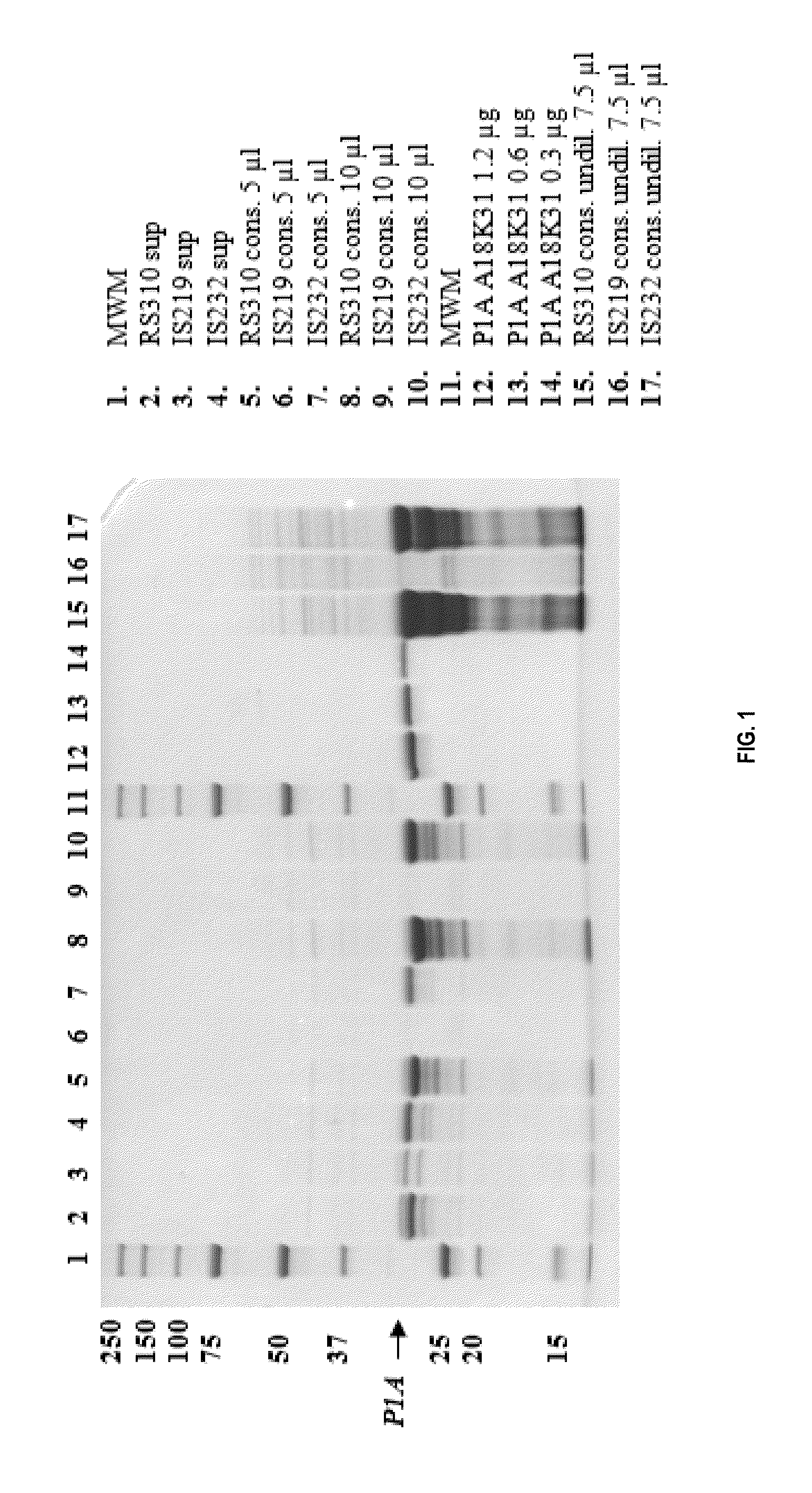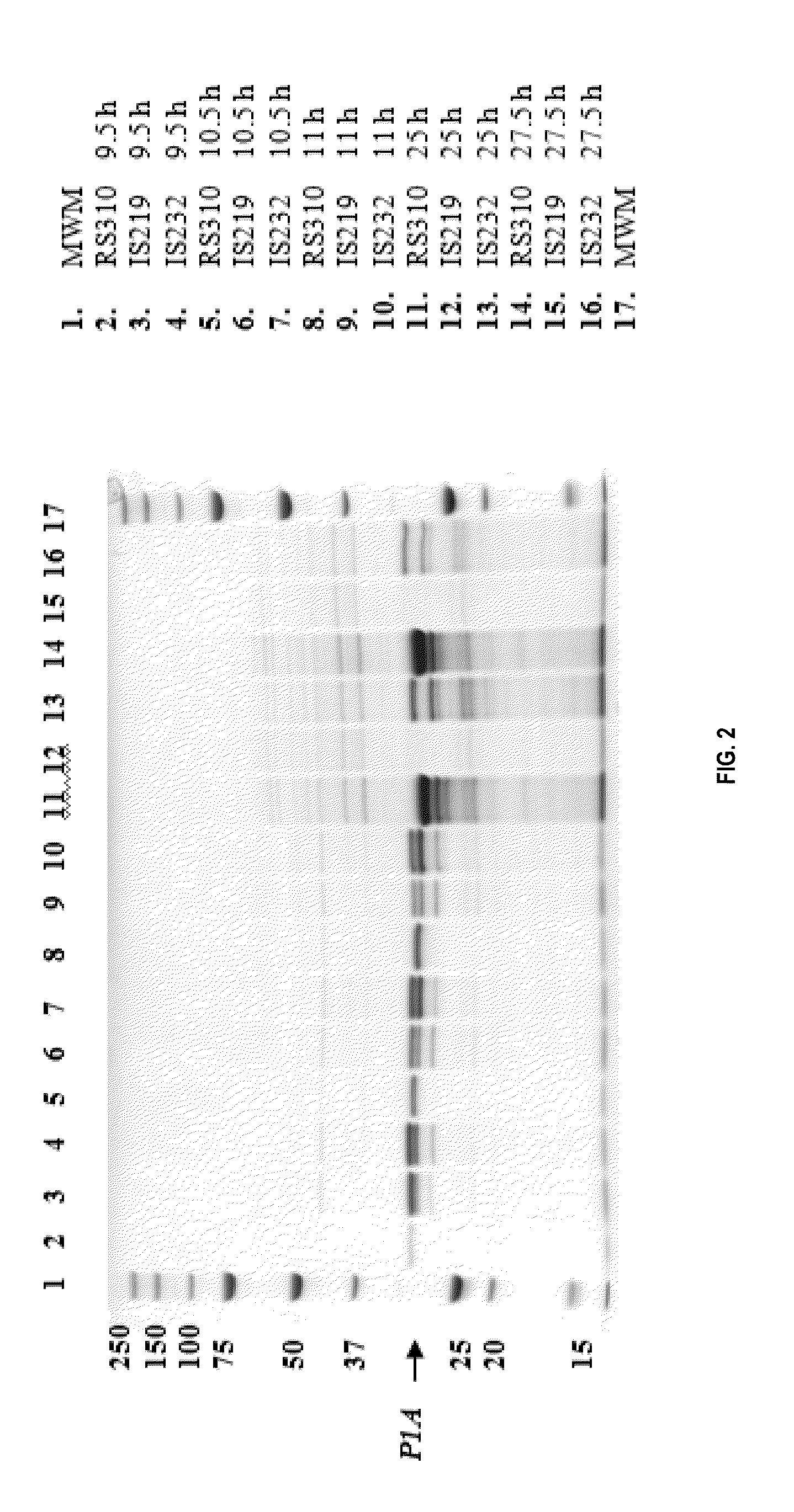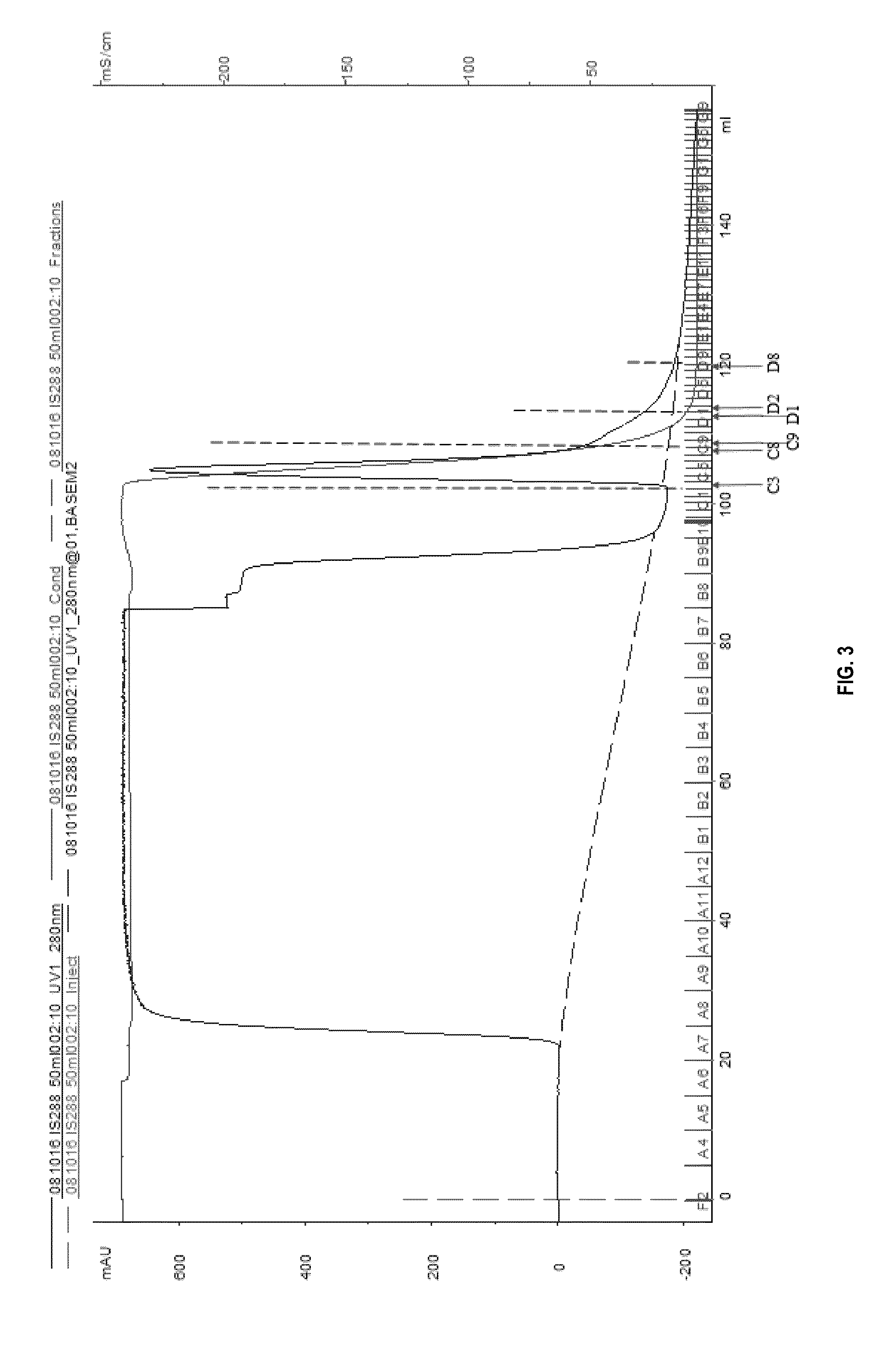Beta-lactamases with improved properties for therapy
a technology of beta-lactamases and beta-lactamases, applied in the field of betalactamases, can solve the problems of further disease, undesirable effects, and and achieve the effect of preventing the disruption of the microbiom
- Summary
- Abstract
- Description
- Claims
- Application Information
AI Technical Summary
Benefits of technology
Problems solved by technology
Method used
Image
Examples
example 1
Materials and Methods
[0116]Different P1A mutants were made either with site-directed mutagenesis using SOE or QUIKCHANGE Multi Site-Directed Mutagenesis Kit (Stratagene, CA, USA) or with random mutagenesis using GeneMorph® II Random Mutagenesis Kit (Stratagene, CA, USA). Mutated DNA was transformed into bacteria, either E. coli or B. subtilis, which were screened on cefotaxime (site-directed mutants) or ceftriaxone (random mutants). The presence of β-lactamase in colonies was further confirmed with a nitrocefin test and the positive colonies were selected for further analysis. The DNA sequences of the mutant 3-lactamases were confirmed by sequencing.
[0117]β-lactamase activity of the mutants was further characterised from E. coli cell lysates and B. subtilis growth supernatant with ampicillin, cefotaxime, ceftriaxone, cefuroxime, ceftazidime, meropenem and imipenem. The activities were determined using only one substrate concentration of each antibiotic tested. Selection of the antib...
example 2
Results of Mutagenesis
[0143]Mutation design was based on, inter alia, structural data (e.g. crystal structure data, homolog models, etc.) of the following: P1A crystal structure (Knox and Moews, J. Mol Biol., 220, 435-455 (1991)), CTX-M-44 (1BZA (Ibuka et al. Journal of Molecular Biology Volume 285, Issue 5 2079-2087 (1999), 1IYS (Ibuka et al. Biochemistry, 2003, 42 (36): 10634-43), 1IYO, 1IYP and 1IYQ (Shimamura et al. 2002 J. Biol. Chem. 277:46601-08), Proteus vulgaris K1 (1HZO, Nugaka et al. J Mol Biol. 2002 Mar. 15; 317(1):109-17) and Proteus penneri HugA (Liassine et al. Antimicrob Agents Chemother. 2002 January; 46(1):216-9. 2002), and reviewed in Bonnet, Antimicrob. Agents Chemother 48(1): 1-14 (2004) (for CTM-X), the contents of all of these documents are hereby incorporated by reference in their entirety). In some embodiments, the present mutations are informed by analysis of structural data (e.g. crystal structure data, homolog models, etc.) of any one of the following β-l...
example 3
Results from Production and Purification of P1A Mutant IS288
[0161]The results of the purification are reported as elution peak figures (FIGS. 3, 4, and 5) and peak tables, as protein concentration and as SDS-PAGE picture(s) (FIG. 6).
Chromatograms from Hydrophobic Interaction Chromatography
[0162]Hydrophobic interaction chromatography (HIC) was run on three separate occasions with differing parameters. In the first run (Oct. 16, 2008, FIG. 3) the sample volume was 50 ml, volume of flow through fractions 5 ml, wash volume for the unbound sample 2 CV, and the volume of eluted fractions 1.0 ml. In the following HIC run (Nov. 4, 2008, FIG. 4) the sample volume was increased to 65 ml, flow-through fraction volume to 10 ml, and wash volume for unbound sample to 3 CV and fraction size to 1.5 ml. In the last run (Nov. 12, 2008, FIG. 5) only the sample volume and wash volume for unbound sample differed from the preceding run being 125 ml and 4 CV, respectively.
[0163]All the graphs of HIC runs ...
PUM
| Property | Measurement | Unit |
|---|---|---|
| Fraction | aaaaa | aaaaa |
| Efficiency | aaaaa | aaaaa |
| Antimicrobial properties | aaaaa | aaaaa |
Abstract
Description
Claims
Application Information
 Login to View More
Login to View More - R&D
- Intellectual Property
- Life Sciences
- Materials
- Tech Scout
- Unparalleled Data Quality
- Higher Quality Content
- 60% Fewer Hallucinations
Browse by: Latest US Patents, China's latest patents, Technical Efficacy Thesaurus, Application Domain, Technology Topic, Popular Technical Reports.
© 2025 PatSnap. All rights reserved.Legal|Privacy policy|Modern Slavery Act Transparency Statement|Sitemap|About US| Contact US: help@patsnap.com



